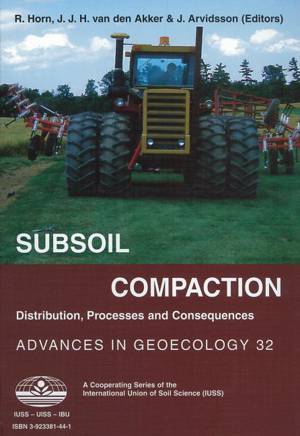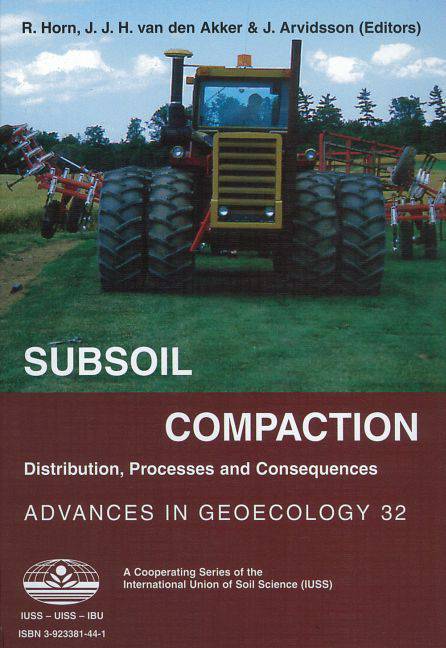
- Retrait gratuit dans votre magasin Club
- 7.000.000 titres dans notre catalogue
- Payer en toute sécurité
- Toujours un magasin près de chez vous
- Retrait gratuit dans votre magasin Club
- 7.000.000 titres dans notre catalogue
- Payer en toute sécurité
- Toujours un magasin près de chez vous
Subsoil Compaction
Distribution, Processes and Consequences
99,95 €
+ 199 points
Description
Subsoil compaction induced by compression and shearing is characterised as one of the most harmful and persisting degradation phenomena. During the last 3-4 decades not only the mass of the agricultural and forestry machinery has been enlarged 3-4 fold, but also the frequency of wheeling is increased by the same proportion. It is often reported that more than 30 Mha of farm land are classified as irreversibly degraded by subsoil compaction even only in Europe, while world wide more than 80 Mha are deformed as a result of such non site and time adjusted agricultural and / or perhaps also forestral management strategies. How far the consequences of subsoil compaction phenomena also result in a more pronounced mass transport and resulting soil degradation by water and wind erosion is also often mentioned or speculated and at least partly proofed by the increased mass transport by water in the traffic lanes. In addition the plowpan impermeability also causes water interflow with an induced consecutive submerged soil suspension mass transfer. Although many of the effects, which cause e.g. a reduced penetration of roots, infiltration of water, aeration and delayed nutrient ad- and desorption phenomena, are already well known, often described and partly explained monocausally, there is still an urgent need to get a more complete insight in the processes and the restrictions to the applied prediction models. Processes inside unsaturated aggregated soils and their pore systems during soil compaction and shearing have to be more completely understood, defined and also related as coupled processes to the changes in physical, chemical and biological properties in the three phase soil systems in order to get more complete process oriented knowledge and informations for defining prevention strategies and recommendation for a site adjusted and sustainable land use. Especially the discussions about vulnerability, economics, and even climatic (global) change aspects require not only more specific research under defined laboratory and field conditions, but also the intense discussion amongst scientists from various disciplines (e.g. soil sciences, plant production, agricultural engineering, soil mechanics and mathematical modelling). Thus, based on this idea scientists from more than 30 countries out of 4 continents met in Kiel/Germany during a series of 3 workshops in march 1999 in order to focus their discussions on distribution, processes and consequences of subsoil compaction on the environment and to also give some preliminary recommendations how to prevent, handle and ameliorate subsoil compaction problems. The book contains a selection of papers and poster presentations which cover the topics: Theory, Modelling, Site Properties, Distribution, and Methods.
Spécifications
Parties prenantes
- Editeur:
Contenu
- Nombre de pages :
- 462
- Langue:
- Anglais
- Collection :
- Tome:
- n° 32
Caractéristiques
- EAN:
- 9783510653713
- Format:
- Livre relié
- Dimensions :
- 170 mm x 240 mm
- Poids :
- 950 g






